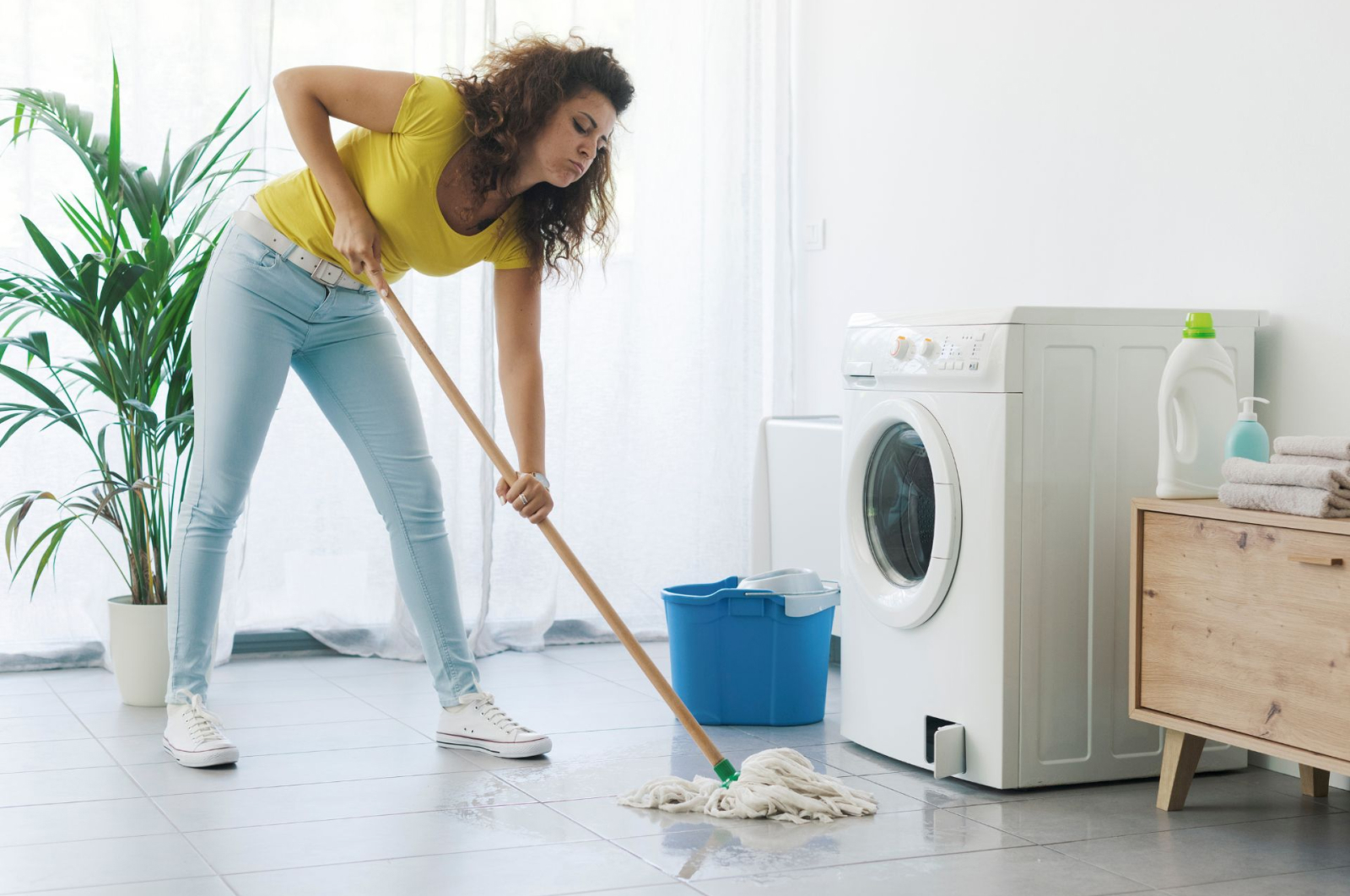Find A Plumber Near You
Call Us Now:

Water puddles, a musty smell, and warped flooring in your laundry room—these are some telltale signs of a washer leaking from underneath.
A washing machine leaking from the bottom, or any water leak, if left untreated, can lead to mould growth, structural instability, and corroded pipes in your home. So, if you notice puddles underneath your washing machine, you need to spring into action to avoid serious consequences.
Keep reading to learn what to do and when to call a plumber!
| What Causes a Washing Machine to Leak |
|---|
|
Washing machine leaks can be identified by when they happen at different stages of the wash cycle. Whether you have a top-loading washing machine or a front-load washer, the leaks can be fixed in similar ways, based on the parts you need to replace or repair.
Leaks during the fill stage are most often caused by issues with the tub seal, the part responsible for stopping the water from leaking between the inner and outer drum. These can wear out over time and might be why the bottom of your washing is leaking.
If the water doesn’t fill up to the right level and leaks underneath, the tub seal is likely broken. However, if the tub overfills during this stage, the water level switch may instead be the problem—it’s supposed to stop this from happening!
 Image Source: Canva
Image Source: Canva
Leaks during the spin cycle are often caused by issues with your washer’s hoses. Whether they’re punctured, too loosely connected, clogged, or worn out, it can cause water to pool underneath. Damaged or loose drain hose clamps may also be the culprit.
Here’s how to check if they’re broken:
Issues at this stage could also be due to an off-balance washing machine!
Leaks during the drain cycle can be caused by the same hose issues, but also by a damaged drain pump. This often happens when a foreign object finds its way inside, either damaging the impeller blades or clogging the pump entirely.
To determine if the drain pump is broken, listen for unusual sounds when the washer is draining. Excessive shaking or rattling is also worth noting.
You could also be encountering an issue with the water inlet valve. These connect your inlet water hoses to the washing machine drum and can wear out over time.
During the fill stage, you’ll want to check if water drips from the inlet valve, located at the back of your washer. If so, check it for cracks or residue buildup. A clog here is often to blame when a washer is leaking from underneath.
Once you have identified the source of the issue, you can try to limit the damage from the leaks by doing some repairs. If your washing machine is leaking from the bottom, try:
For leaks during the fill cycle:
For leaks during the spin cycle:
For leaks during the drain cycle or related to the hose:

Image Source: Canva
If you’re unable to resolve the issue quickly, turn off the washing machine and unplug it from the electrical source. Always move washing machines away from wall sockets to prevent electrical accidents before proceeding to step three.
When you need to run a load of laundry, the last thing you want to find is your washing machine leaking from the bottom. While you can try to identify and fix the issue yourself, you’re much better off letting us handle it.
At 1st Rooter, fixing washing machine leaks is one of our specialties. We’ll figure out why your washer is leaking from underneath, then get it back up and running in no time. Friendly and timely service are what we’re known for.
So, if you’ve noticed a worrisome water leak from under your washing machine, make us your first choice for repairs—we’ll get everything sorted out!
Leave A Reply